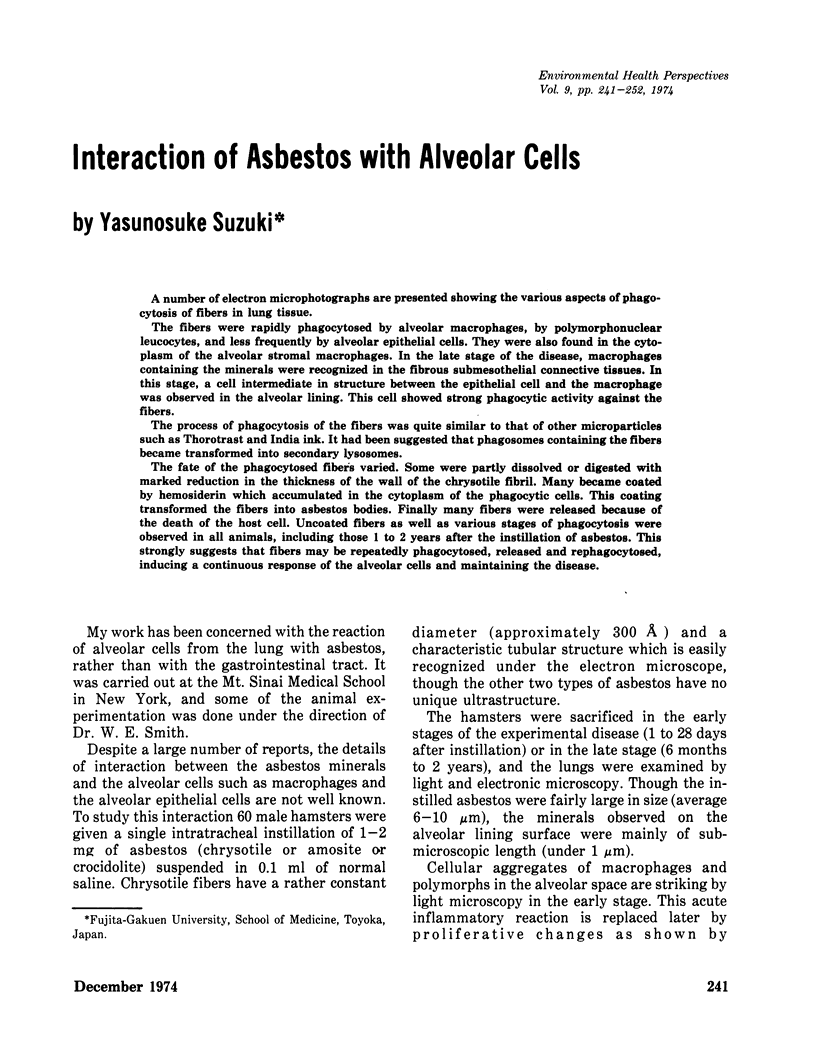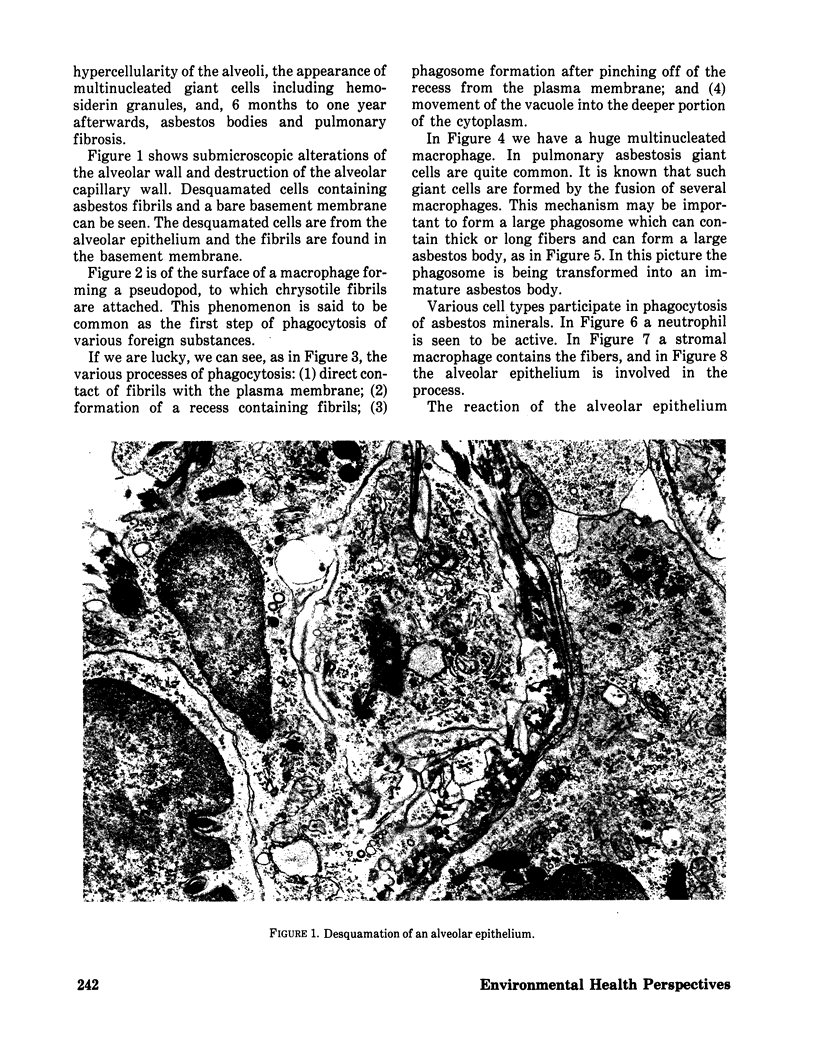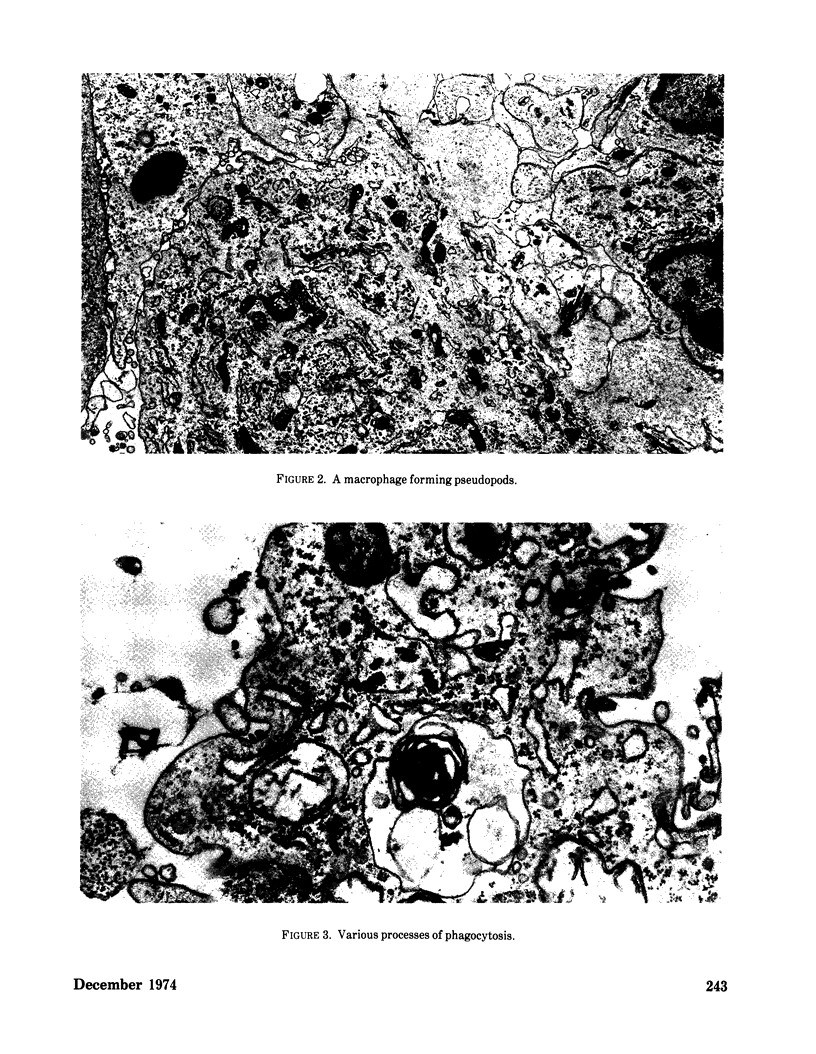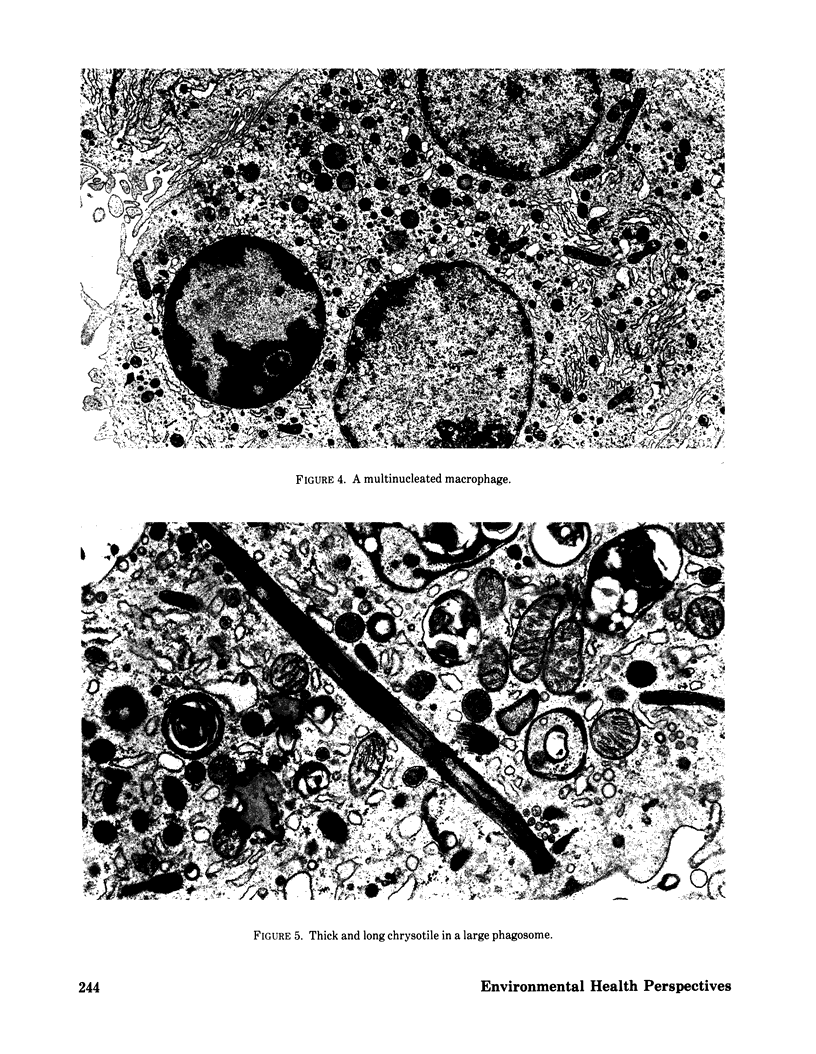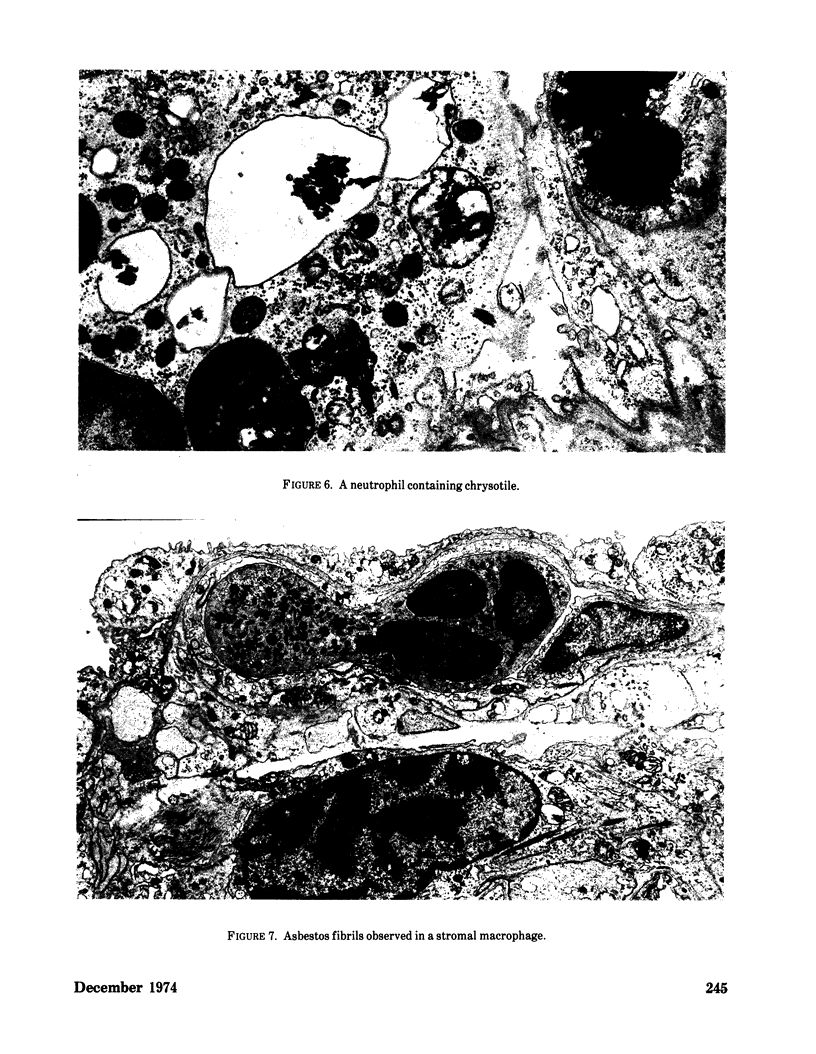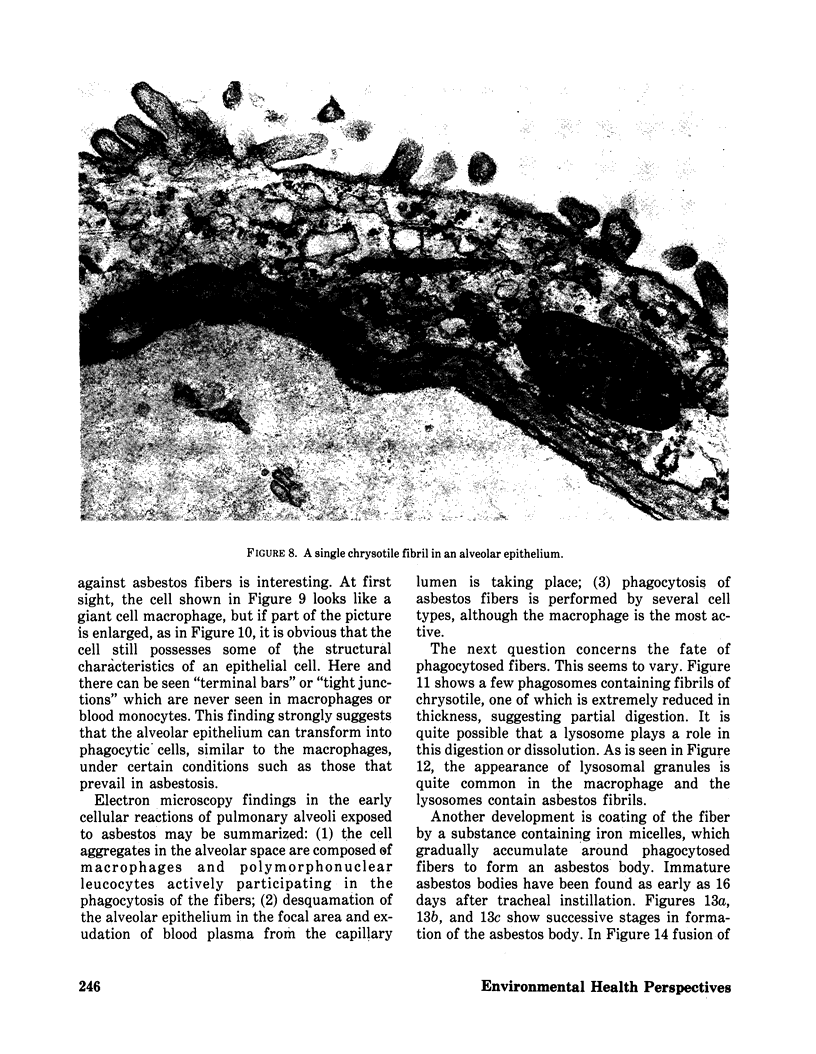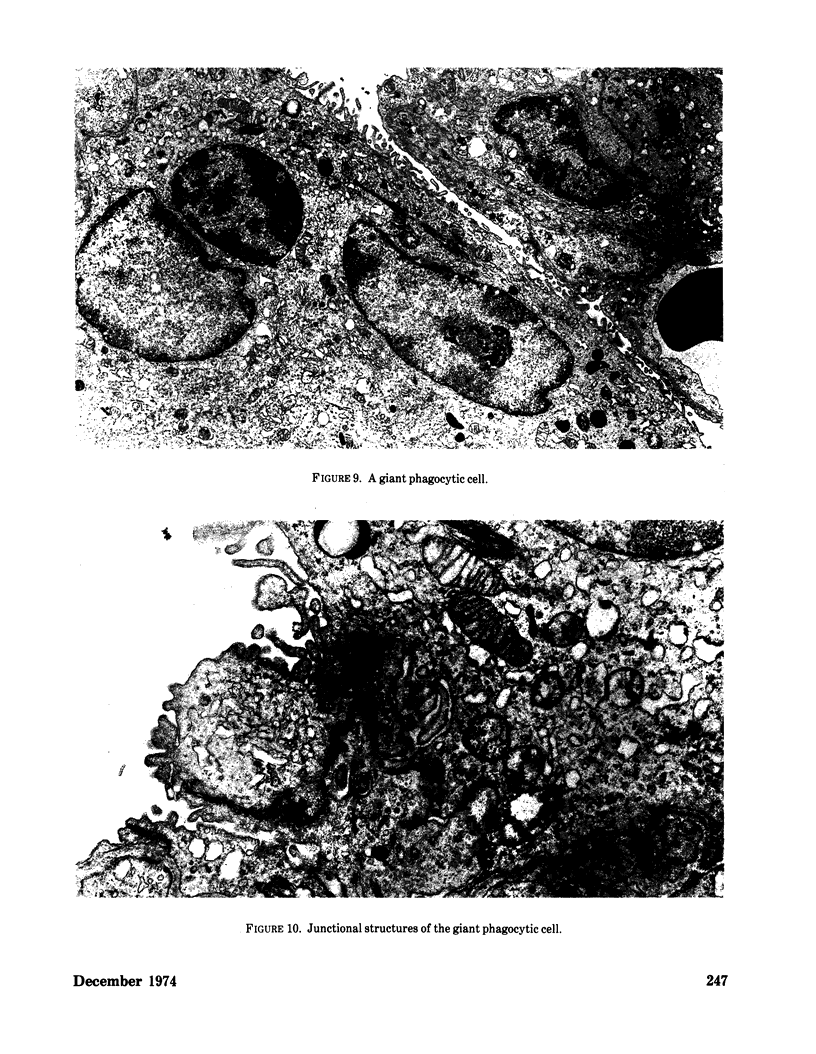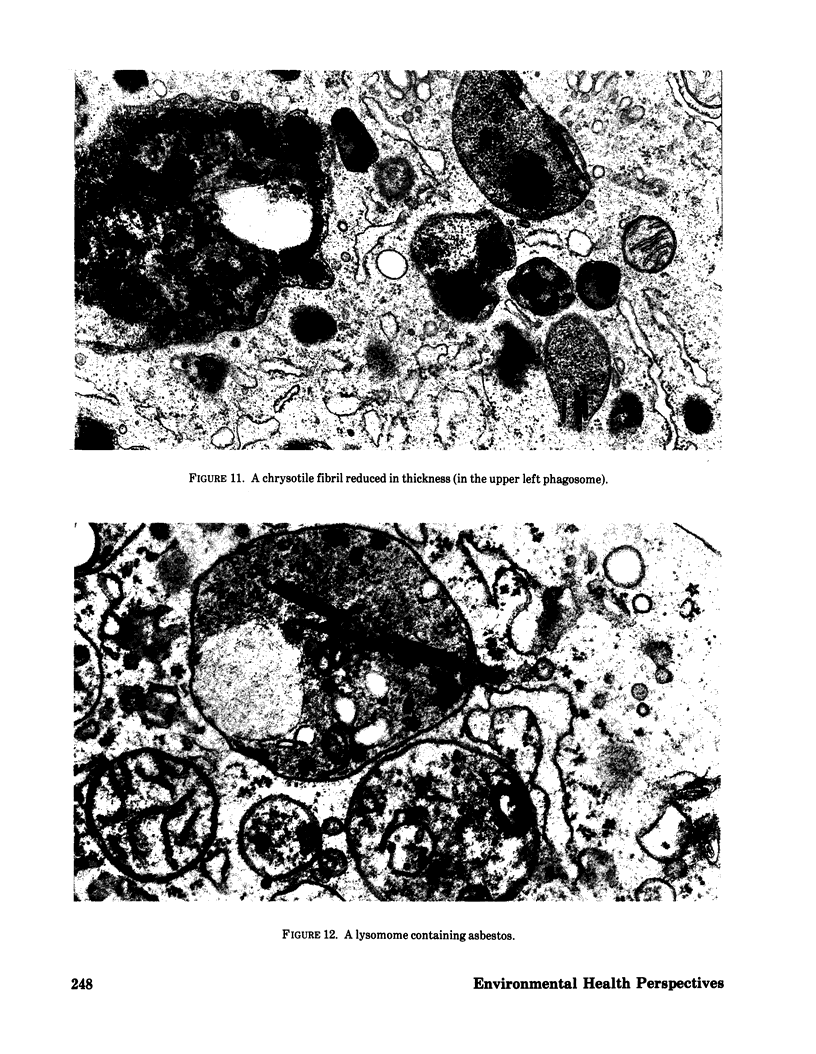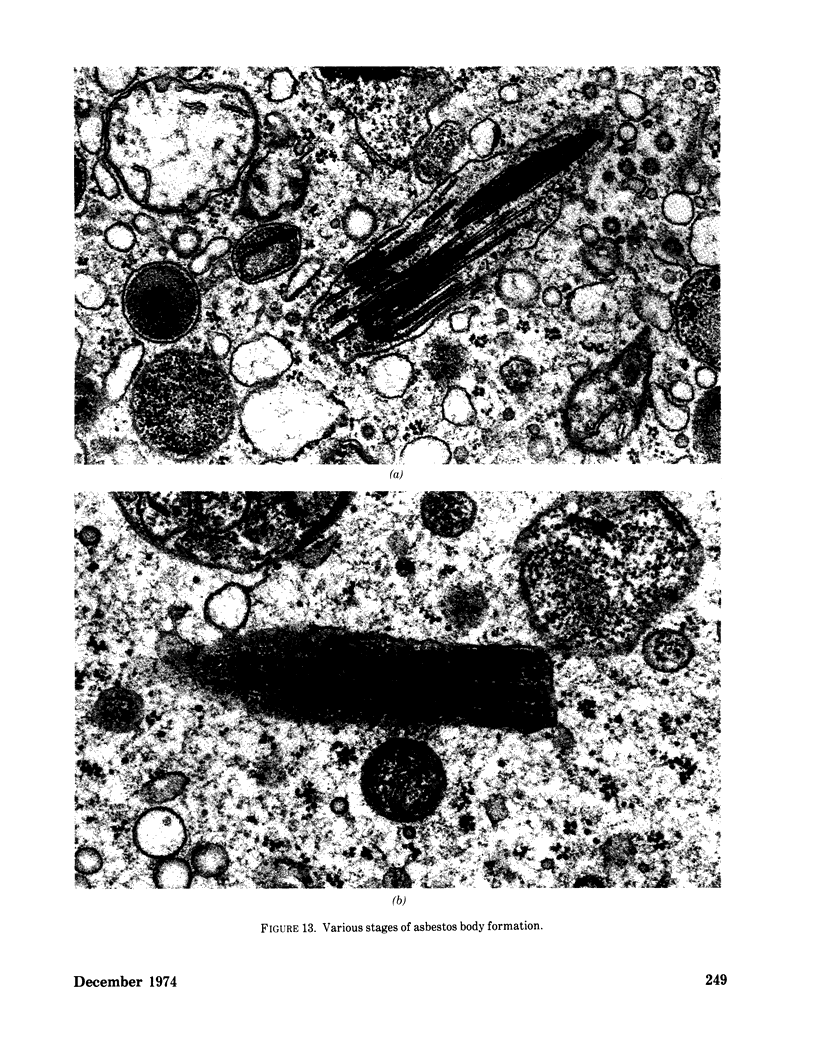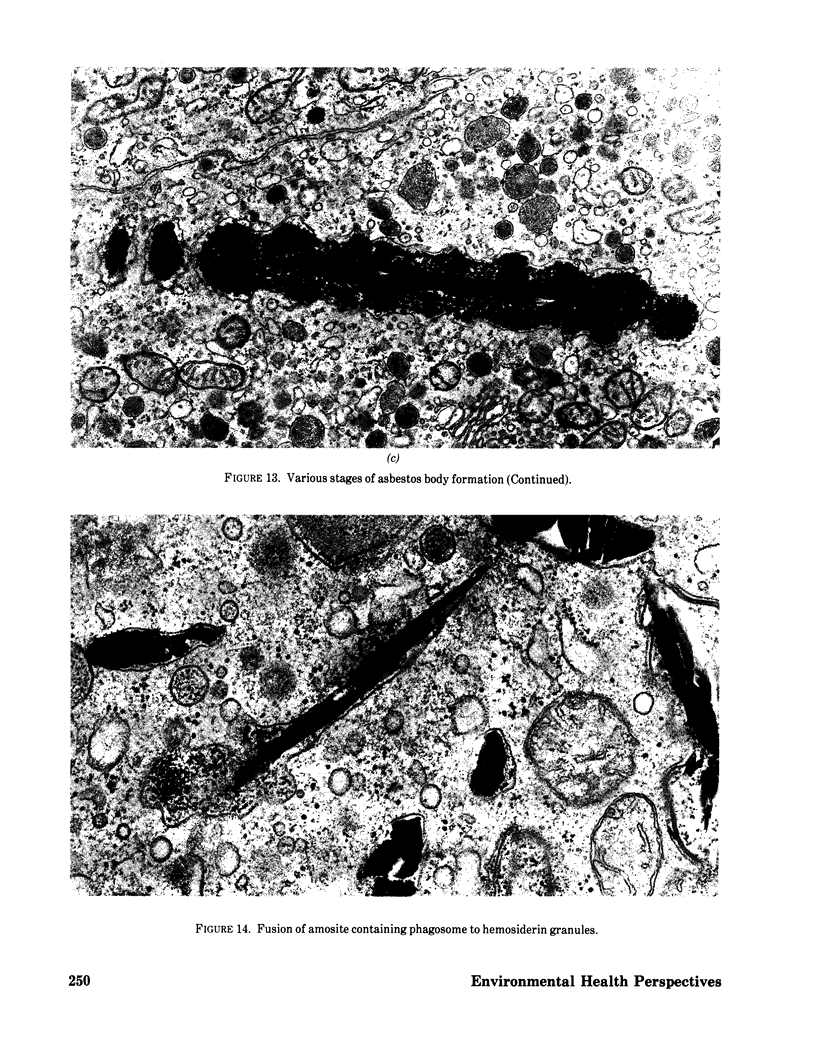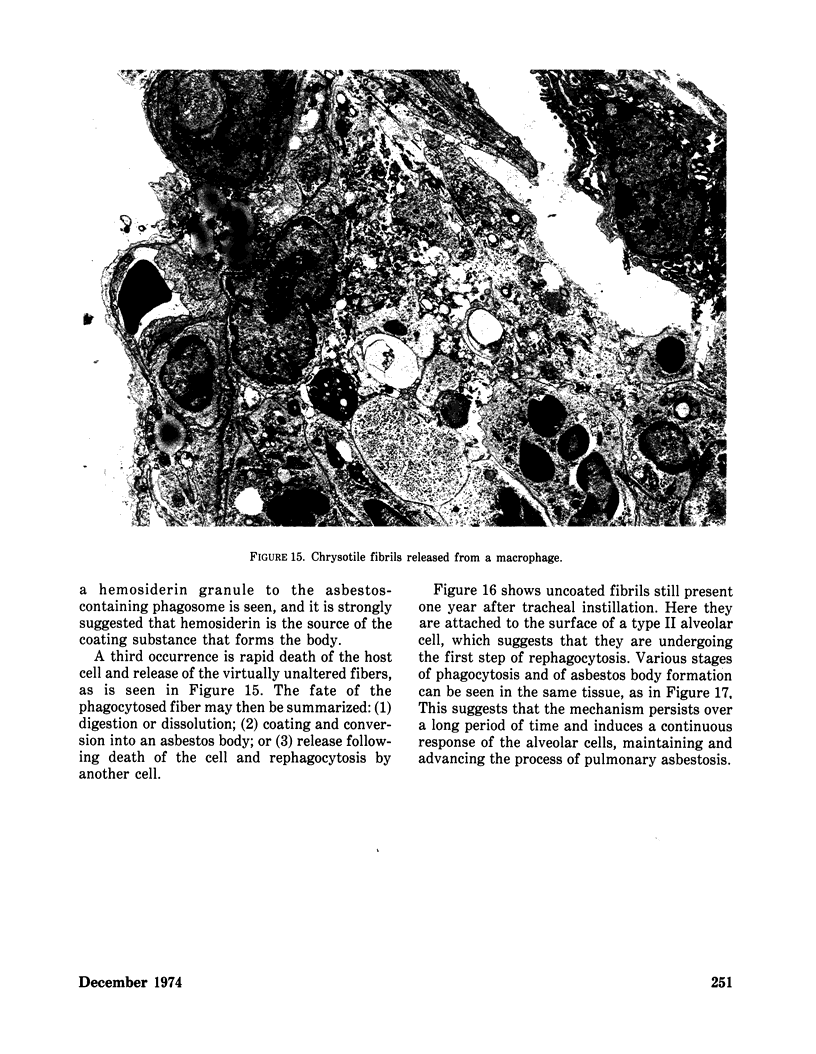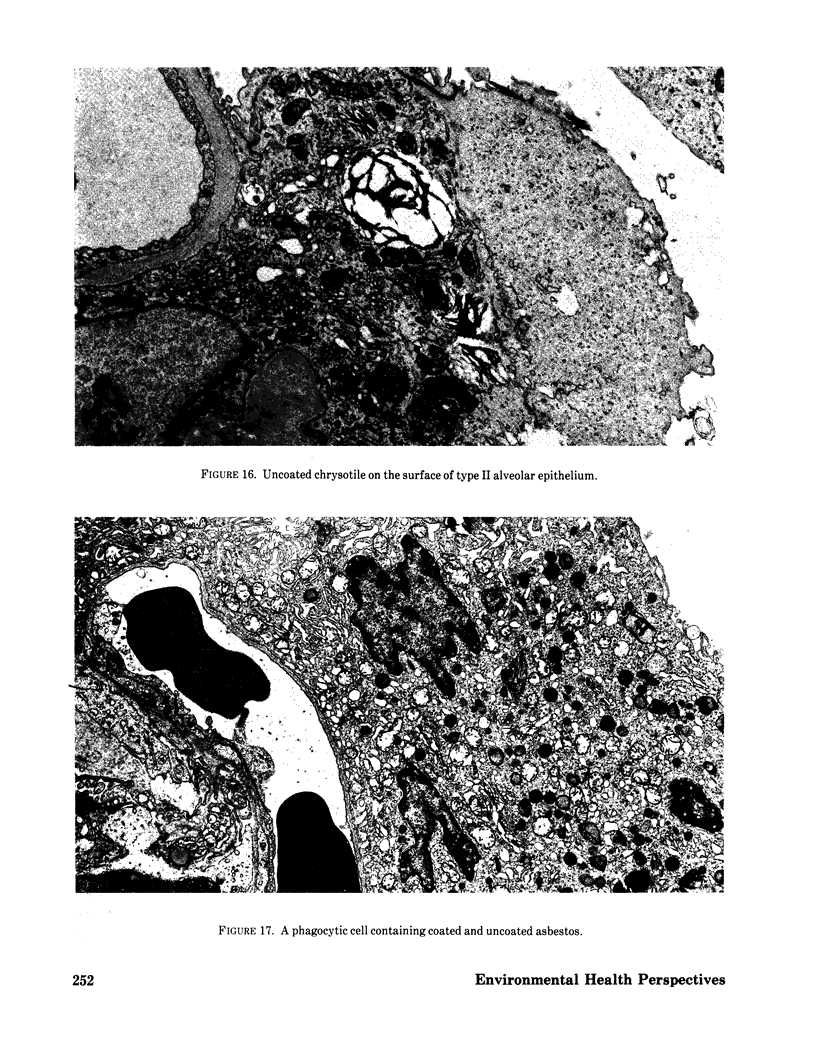Abstract
A number of electron microphotographs are presented showing the various aspects of phagocytosis of fibers in lung tissue.
The fibers were rapidly phagocytosed by alveolar macrophages, by polymorphonuclear leucocytes, and less frequently by alveolar epithelial cells. They were also found in the cytoplasm of the alveolar stromal macrophages. In the late stage of the disease, macrophages containing the minerals were recognized in the fibrous submesothelial connective tissues. In this stage, a cell intermediate in structure between the epithelial cell and the macrophage was observed in the alveolar lining. This cell showed strong phagocytic activity against the fibers.
The process of phagocytosis of the fibers was quite similar to that of other microparticles such as Thorotrast and India ink. It had been suggested that phagosomes containing the fibers became transformed into secondary lysosomes.
The fate of the phagocytosed fibers varied. Some were partly dissolved or digested with marked reduction in the thickness of the wall of the chrysotile fibril. Many became coated by hemosiderin which accumulated in the cytoplasm of the phagocytic cells. This coating transformed the fibers into asbestos bodies. Finally many fibers were released because of the death of the host cell. Uncoated fibers as well as various stages of phagocytosis were observed in all animals, including those 1 to 2 years after the instillation of asbestos. This strongly suggests that fibers may be repeatedly phagocytosed, released and rephagocytosed, inducing a continuous response of the alveolar cells and maintaining the disease.
Full text
PDF